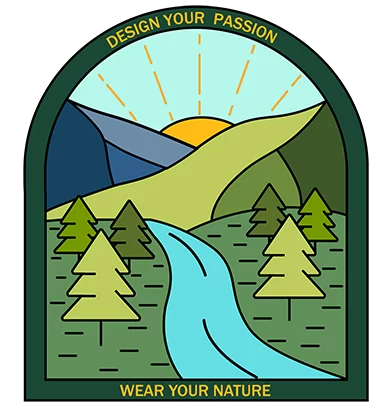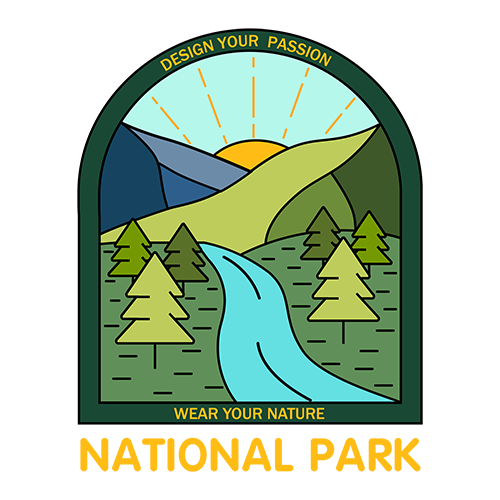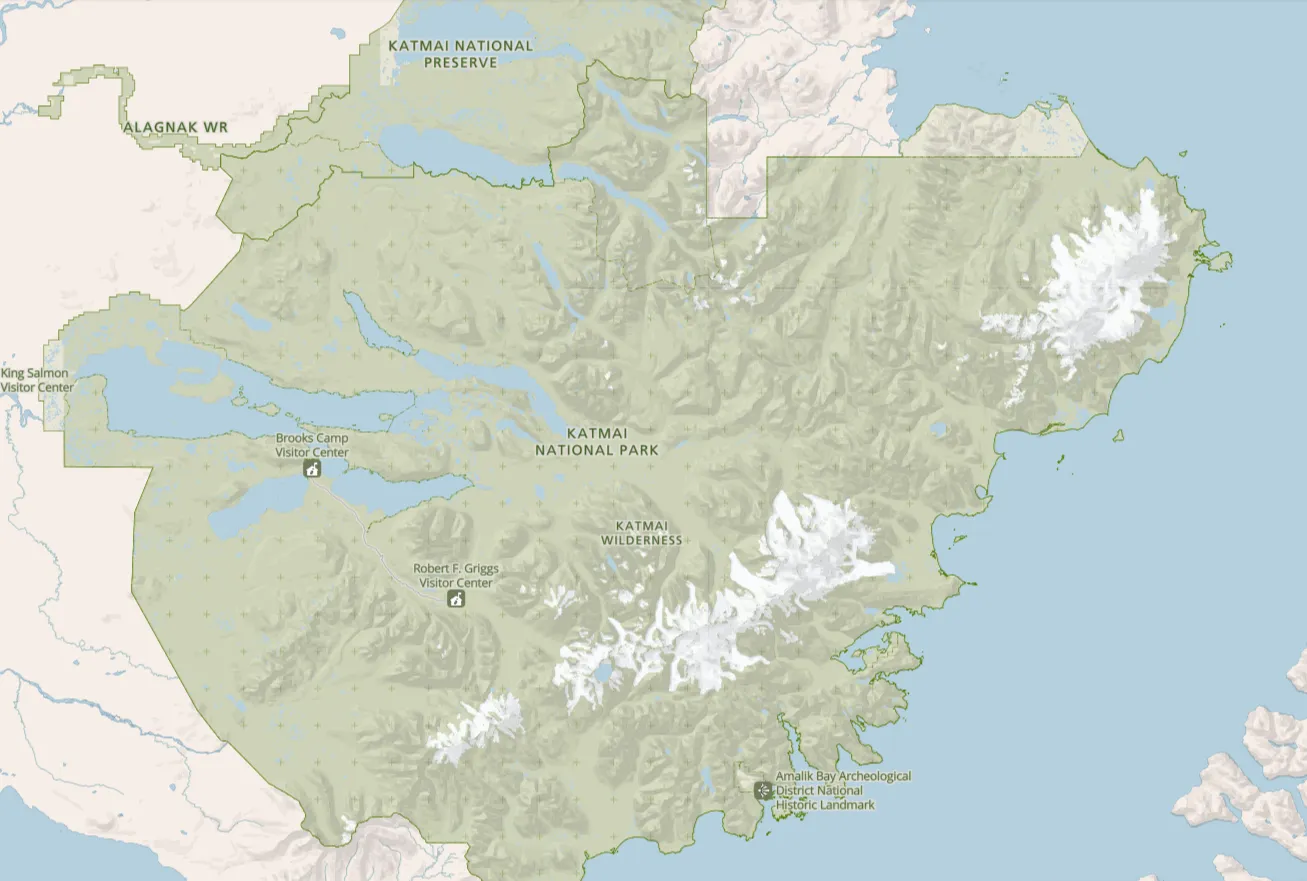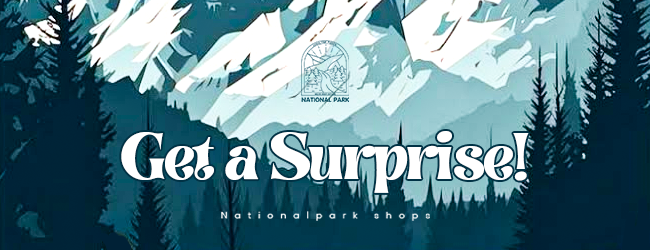Katmai National Park and Preserve
Nestled on the southwestern edge of the Alaskan Peninsula, Katmai National Park and Preserve is a sprawling wilderness brimming with rugged beauty, diverse wildlife, and a haunting history. This expansive protected area, encompassing over 4.0 million acres, embodies the untamed spirit of Alaska, showcasing dramatic volcanic landscapes, shimmering glaciers, lush forests, and teeming marine ecosystems. Beyond the dramatic volcanic heritage, Katmai is a sanctuary for an astonishing array of wildlife. Let’s explore details with nationalparkshops.com in the following article.

Katmai National Park and Preserve Overview
Katmai National Park and Preserve in Alaska is known for its stunning volcanoes and diverse wildlife, including fish, flowers, and bears. The park was originally established in 1918 to protect the Valley of Ten Thousand Smokes, created by the Novarupta Volcano eruption.
Today, Katmai remains a popular destination for its natural beauty, brown bears, abundant fish in pristine waterways, remote wilderness, and rugged coastline. The park’s vast area includes wild rivers, streams, coastlines, valleys, glaciers, volcanoes, and Naknek Lake, providing a habitat for a wide variety of wildlife.
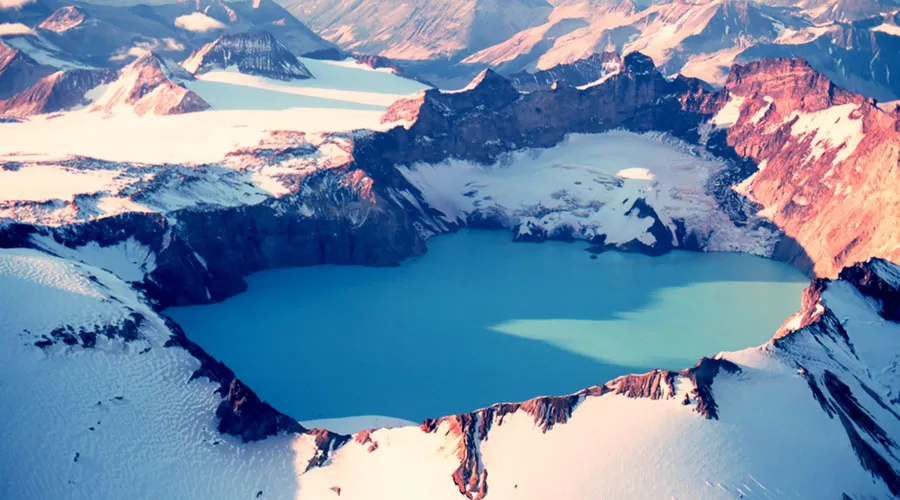
Things to do in Katmai National Park and Preserve
Katmai National Park and Preserve offers a wealth of activities and experiences for visitors to explore its vast and captivating wilderness.
Hiking
Katmai is a remote park with less than five miles of maintained trails, offering endless opportunities for adventure, exploration, and solitude in its backcountry. Travel options include hiking, kayaking, canoeing, rafting, boating, or flying.
Many visitors to the backcountry realize that more advanced skills are needed beyond basic camping knowledge to ensure a safe and enjoyable trip. While no permits are required for camping in Katmai’s backcountry, thorough planning is essential for a successful and pleasant visit.
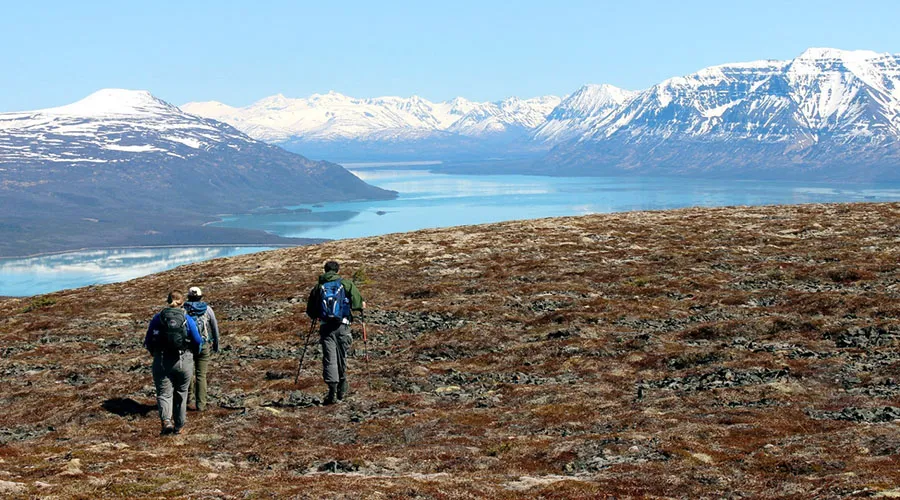
Bear Watching
When most people think of Katmai, they imagine bears. Katmai is known as one of the top places in the world to view brown bears. It is estimated that around 2,200 brown bears live in the park, outnumbering the human population on the Alaska Peninsula.
As bear populations decline globally, Katmai remains one of the few places where bears can thrive in their natural environment. Scientists have the opportunity to observe bears in their natural habitat, visitors can enjoy exceptional viewing experiences, and the bears can carry on with their life cycle without much disturbance.
Maintaining a harmonious relationship between humans and bears is crucial for Katmai’s success as a bear-viewing destination. Park rangers, scientists, and the public collaborate to preserve this delicate balance. Visitors to Katmai must show respect towards bears and be equipped with the necessary knowledge to stay safe in bear territory. While the temptation to capture the perfect photo or secure the best fishing spot may be strong, it is important to remember that bears need space to sleep, eat, rest, move around and play.
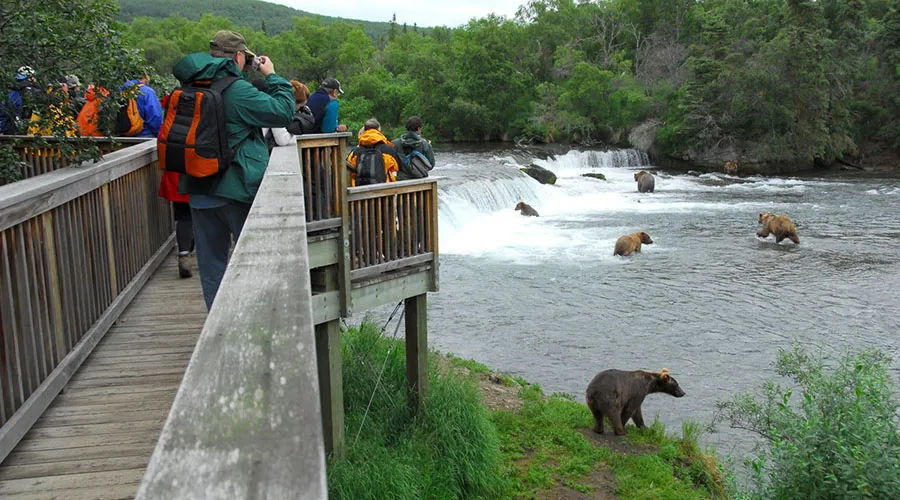
Boating
Katmai has many rivers, lakes, and ponds that were utilized by Native Alaskans long before encounters with Russian and European explorers. These waterways still serve as scenic travel routes for modern adventurers to easily explore Katmai’s wilderness.
All water routes are open for boating following USCG and Alaska State regulations. Motor boats must be registered and equipped with necessary safety gear. Boats with discharge systems must prove they are inoperable.
Prior to boating, share a float plan with a trusted person detailing your departure and return times, vessel description, number and ages of passengers, boating experience, and knowledge of the waters being navigated.

Flightseeing
One of the most impressive ways to experience Katmai National Park and Preserve is by taking a flight in a small airplane. Flying over the park allows you to appreciate the vastness and variety of its landscape, from lowland tundra to expansive lakes, rugged coastlines, and even the active volcanoes of the Aleutian Range.
Aside from the breathtaking views, passengers on these flights often have the chance to spot schools of salmon in rivers, bears and moose wandering around, as well as bird rookeries and marine mammals resting on rocky islands.
The majority of air taxi companies permitted to operate in Katmai offer flightseeing tours that typically depart from nearby communities like Anchorage, Homer, King Salmon, Kodiak, and Soldotna, among others.

Fishing
Sport fishing has been deeply intertwined with the history of tourism in the Katmai region. Many tourist facilities were initially established due to the exceptional sport fishing opportunities in the area. Anglers from around the globe are drawn to Katmai for the chance to catch a variety of prized fish species such as rainbow trout, arctic char, dolly varden, arctic grayling, lake trout, and five types of Pacific Salmon.
Despite the outstanding fishing available, it is important to note that these valuable sport fish are at risk of overfishing. Both Katmai National Park and Preserve and the Alaska Department of Fish and Game (ADFG) work diligently to manage fish populations through regulations that aim to sustain the long-term health of Katmai’s sport fishery. Anyone planning to fish in Katmai must be well-informed about these regulations.
Nonresidents aged 16 and above, as well as most residents aged 16 to 59, are required to have an Alaska sport fishing license to fish in the region. Additionally, you may need a harvest record card and/or a king salmon stamp before you can start fishing. It is important to be aware that special federal regulations apply to the Brooks River, on top of the state regulations.
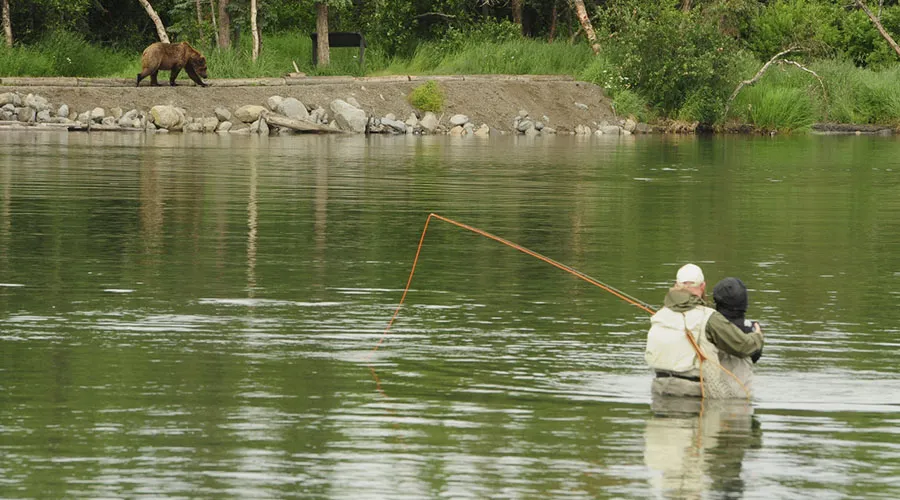
Hunting and Trapping
Hunting and trapping are allowed in Katmai National Preserve, but not in Katmai National Park. To participate in these activities in the preserve, you need to have the necessary licenses and permits as well as comply with state regulations.
Commonly hunted species in the preserve include moose and brown bear. Remember that some areas within the preserve are privately owned, so it is essential to obtain permission before entering these lands. Season dates and residency requirements for species like caribou may also apply.
Planning is crucial for hunting and trapping in Katmai National Preserve. In most cases, access will require using air taxi services via float plane from King Salmon or nearby villages.

Explore Attractions
Situated adjacent to the King Salmon Airport, the King Salmon Visitor Center provides extensive information about federal public lands in the Alaska Peninsula and Bristol Bay region. Operating hours vary depending on the season.
The exhibits at the center highlight the stunning natural resources and diverse history of the Alaska Peninsula. Visitors can watch a wide selection of films and explore the Alaska Geographic bookstore, which stocks maps, navigation charts, videos, posters, and other materials.

Ranger Programs
From the inception of the National Park Service, park rangers have been educating visitors through various activities such as guided walks, talks, and campfire programs. This tradition still thrives today, offering a wonderful opportunity to explore and learn about Katmai National Park.

Places to stay in Katmai National Park and Preserve
Katmai National Park and Preserve offers a variety of accommodation options to suit the needs and preferences of visitors, from rustic wilderness camping to more comfortable lodge-style accommodations.
Camping
The Brooks Camp Campground is situated by Naknek Lake, surrounded by mature balsam poplar and birch trees. Its setting, amenities, and chances to see wildlife make it a truly special camping spot in North America.
Rather than having specific spots, the campground can accommodate up to 60 people at a time. Due to the popularity of bear viewing at Brooks Camp, it’s recommended to book your stay well in advance.
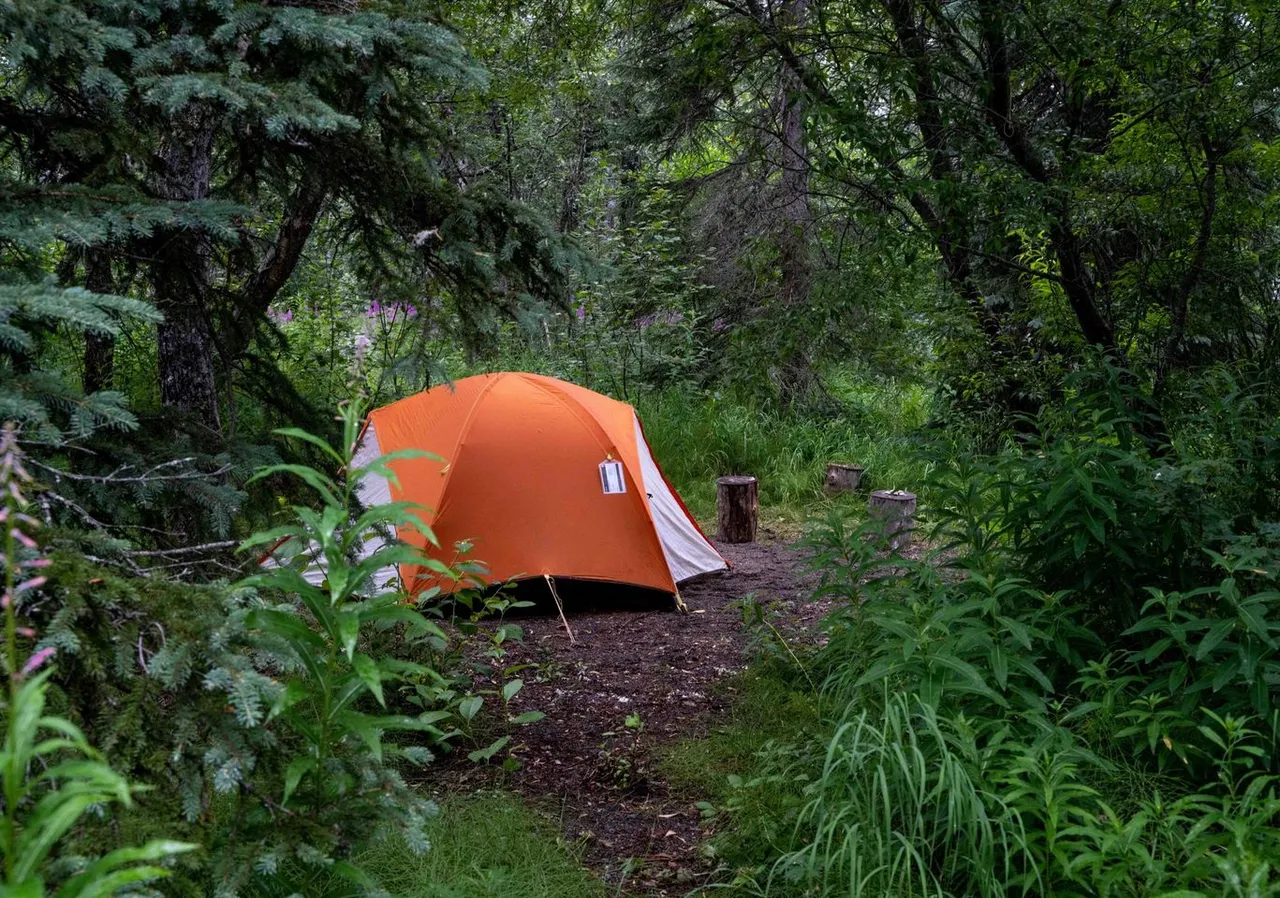
Hotel and Resort
For those seeking a more comfortable and amenity-rich experience, Katmai National Park and Preserve offers several lodging options, including hotels and resorts.
Brooks Lodge
Brooks Lodge is located in the heart of Katmai National Park, overlooking Brooks River. Originally a fishing camp since 1950, it has been continuously upgraded and is known worldwide. The lodge offers modern accommodations for two to four people, with a main lodge building featuring a stunning view of Naknek Lake. Meals are served buffet-style three times a day, with cocktails available at the lodge bar. Bear viewing at Brooks Falls is just a short walk away from the lodge.
- Address: Brooks River, Katmai National Park and Preserve, AK 99613
- Price Range: From $37 – $41/night depending on the season and demand
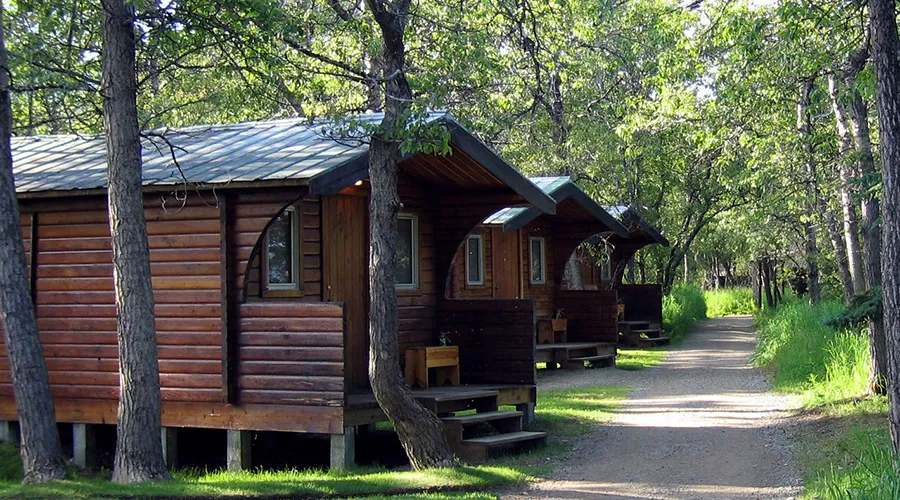
Kulik Lodge
Kulik Lodge is a top fly-out sportfishing lodge in Alaska, situated in the stunning Katmai National Park. It stands out as the sole lodge on the famous Kulik River, known for its exceptional rainbow trout fishing. The crystal-clear water, gravel bottom, and abundant food make it an ideal environment for native rainbow trout. You can also opt for Flyouts from Kulik to explore other prime fishing spots within a 100-mile radius, offering a variety of fish species like rainbow trout, arctic char, grayling, lake trout, pike, and five types of Pacific Salmon. The lodge can host up to 28 guests in 12 cozy cabins, each with its own shower and bath. The main dining area boasts a welcoming fireplace/bar and serves complimentary cocktails.
- Address: Kulik Lake, Katmai National Park and Preserve, AK
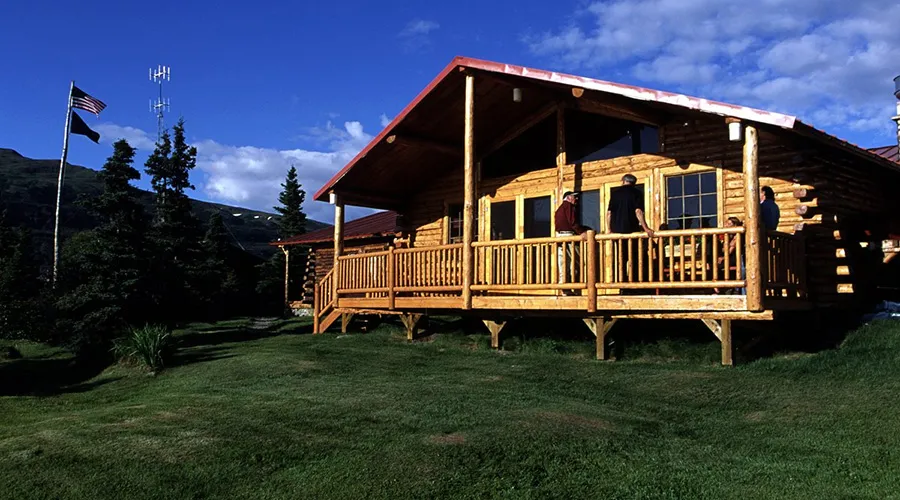
Katmai Wilderness Lodge
Katmai Wilderness Lodge is situated on the secluded coast of Katmai National Park in Alaska, providing up-close and personalized bear viewing. With its remote location and small guest capacity of up to 12 people, the lodge offers intimate guided wildlife tours for a memorable Alaskan adventure.
- Address: Kukak Bay, Katmai National Park and Preserve, AK 99615
- Price Range: From $300/night depending on the season and demand
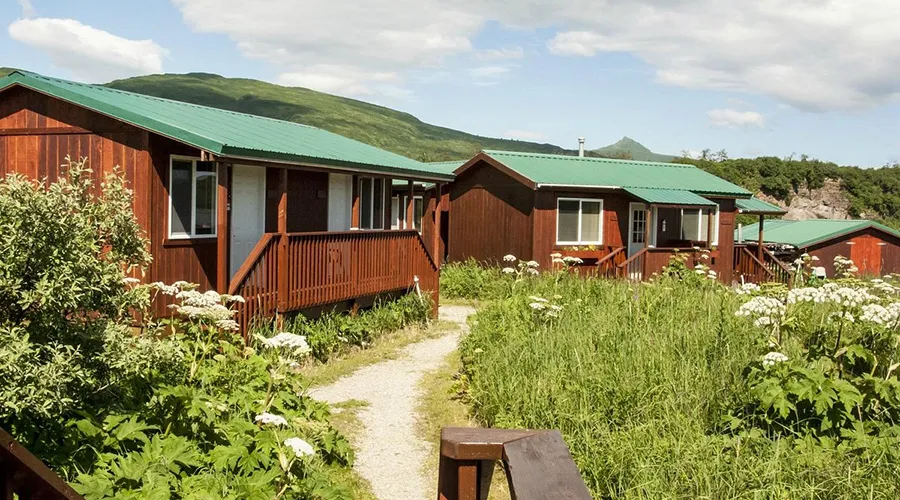
Dining
Food choices in Katmai National Park and Preserve are scarce due to the park’s isolated location and natural surroundings, which make it difficult to offer a wide range of dining options.
At Brooks Camp, the Trading Post managed by Katmailand, Inc. has a small selection of snacks and sodas for sale. While Brooks Lodge focuses on providing meals for overnight guests, it might be feasible to buy meals from them if they have extra availability. Nevertheless, visitors should not depend solely on this for their food needs.
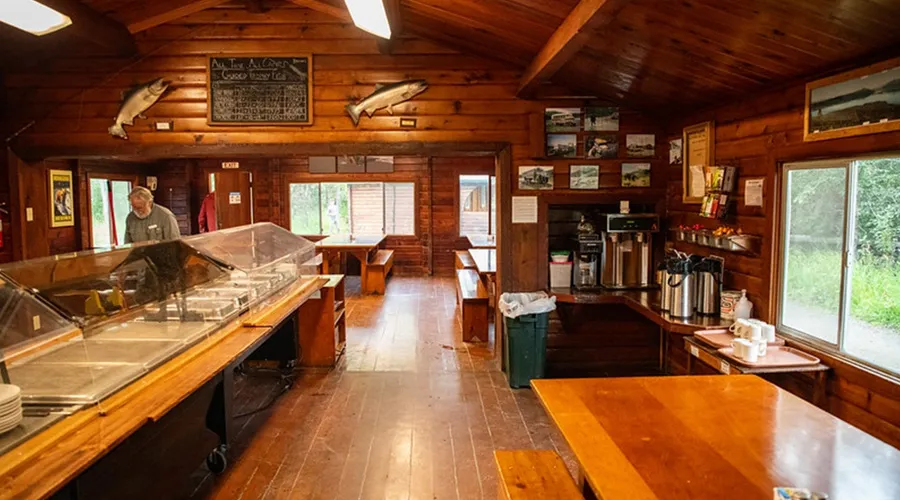
Additionally, you can also enjoy a meal at a restaurant near Katmai National Park in Alaska.
Eddie’s Fireplace Inn
Eddie’s is the sole Bar/Restaurant in King Salmon that operates all year round. It is a source of pride for the local community as it is owned and run by locals. This establishment provides a consistent dining and socializing option for residents and visitors alike, contributing to the vibrant atmosphere of the area.
- Address: 1 Main Street, King Salmon, AK
- Open time: 08:00 AM – 8:00 PM
- Prices range: $20 – $30

Planning Your Trip to Katmai National Park and Preserve
Visiting Katmai National Park and Preserve requires careful planning and consideration, as the park’s remote location and harsh Alaskan climate present unique challenges for travelers.
Visiting Time
The best time to visit Katmai National Park and Preserve is during the summer months, typically from June through September. During this period, the park’s landscapes are at their most accessible location, and visitors can enjoy the peak of the salmon run and the associated bear-viewing opportunities.
The summer months in Katmai are characterized by long daylight hours, mild temperatures, and relatively low precipitation, making it an ideal time for outdoor activities such as hiking, boating, and flightseeing. However, it’s important to note that the park can still experience sudden weather changes, and visitors should be prepared for a range of conditions.
The shoulder seasons of spring (May) and fall (October) can also offer unique experiences, with fewer crowds and the possibility of witnessing the park’s stunning autumn foliage or the arrival of migratory birds. However, these seasons also bring colder temperatures, shorter daylight hours, and the potential for inclement weather, so visitors should be prepared for more challenging conditions.
The best time to visit Katmai National Park and Preserve is during the summer months
In the summer months, Katmai's landscapes are at their most accessible location
Winter in Katmai National Park and Preserve
Winter in Katmai National Park and Preserve
Transportation
Getting to Katmai National Park and Preserve can be an adventure due to its remote location and lack of road access, requiring most visitors to arrive by air or water. The main entry point is through King Salmon, where commercial airlines offer flights from Anchorage and other major Alaskan cities. From there, visitors can arrange air taxi or charter plane services to reach different parts of the park, like Brooks Camp or Kulik Lake. Alternatively, some choose to travel by boat or ferry from coastal towns such as Homer or Kodiak.
It’s important for visitors to plan ahead and organize transportation within the park, whether it’s a guided tour, boat rental, or hiking plans. Overall, a trip to Katmai National Park and Preserve demands careful consideration of its unique features, including its remote setting, diverse landscapes and rich wildlife.
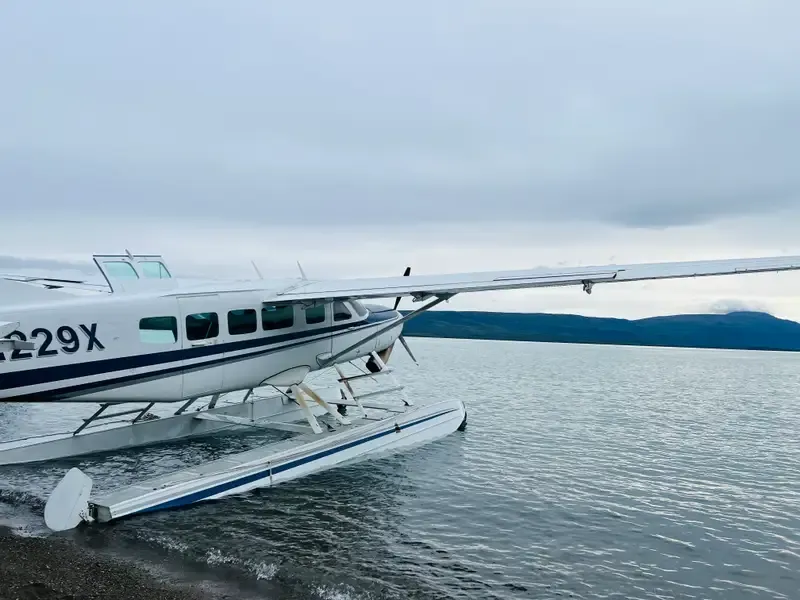
Conclusion
Katmai National Park and Preserve showcases the wild beauty and sheer force of nature in Alaska. The park features stunning landscapes, diverse wildlife, and distinctive geological formations. To make the most of your trip, it’s crucial to choose the optimal time to visit. The summer season from June to September is perfect for observing wildlife, engaging in outdoor adventures, and witnessing impressive salmon migrations. Get ready to be mesmerized by the park’s marvels and depart with a deep respect for the environment.
Katmai National Park and Preserve Photos
Q&A for Katmai National Park and Preserve
The ideal time to visit Katmai is from June to September. During these months, the weather is relatively mild, and the park’s wildlife, particularly the brown bears, is most active. This period also coincides with the salmon runs, providing prime bear-watching opportunities.
Katmai is a remote destination with no road access. Most visitors fly into King Salmon, which is accessible from Anchorage. From King Salmon, you can take a small plane to Brooks Camp or other parts of the park. Alternatively, boat transport can be arranged for those looking for a more scenic journey.
Yes, there are several accommodation options within the park. Brooks Lodge offers comfortable lodging with easy access to the bear viewing areas. For those who prefer a more immersive outdoor experience, Brooks Camp Campground provides a unique opportunity to camp in the wilderness.
Katmai offers a wide range of activities, including hiking, bear watching, boating, flightseeing, fishing, and participating in ranger-led programs. Each activity provides a unique way to explore and appreciate the park’s diverse landscapes and wildlife.
Yes, bear watching is safe as long as visitors follow the park’s guidelines and maintain a safe distance from wildlife. The park provides designated viewing platforms and ranger-led programs to ensure both visitor and bear safety.
Key attractions include the Brooks Falls, where you can see brown bears fishing for salmon, and the Valley of Ten Thousand Smokes, a spectacular volcanic landscape formed by the 1912 Novarupta eruption. Other notable spots include Dumpling Mountain for panoramic views and various rivers and lakes for fishing and boating.
Yes, fishing is a popular activity in Katmai. The park’s rivers and lakes are rich with salmon, trout, and other fish species. Anglers can enjoy both fly fishing and traditional methods, with some areas offering world-class fishing experiences.
Yes, ranger-led programs and guided tours are available and highly recommended. These tours provide valuable insights into the park’s ecology, geology, and history. They cover various topics and are designed to enhance your understanding and appreciation of Katmai’s natural wonders.
Packing for Katmai requires careful consideration due to its remote location and variable weather. Essentials include sturdy hiking boots, weather-appropriate clothing, a good quality rain jacket, insect repellent, sunscreen, binoculars for wildlife viewing, and a camera. For campers, additional gear like tents, sleeping bags, and cooking supplies are necessary.
Dining options within the park are limited. Brooks Lodge offers hearty meals for its guests. If you’re camping, it’s essential to bring your own food supplies and use the designated cooking areas. It’s also important to follow food storage guidelines to avoid attracting wildlife.
Transportation within the park is primarily by small planes, boats, and on foot. Once you arrive at Brooks Camp, most attractions are accessible via hiking trails or guided tours. Boats and planes can also be chartered to explore more remote areas of the park.
Yes, hunting and trapping are permitted in designated areas of Katmai National Preserve (not the National Park). These activities are regulated to ensure sustainable wildlife populations and balance the needs of the ecosystem. Always check current regulations and obtain the necessary permits before planning your hunting trip.
Weather in Katmai can be unpredictable, with temperatures ranging from mild to cold, even in summer. Rain is common, so waterproof clothing and gear are essential. Layered clothing is recommended to adjust to changing conditions throughout the day.
Katmai is renowned for its wildlife, especially the brown bears. You may also see moose, wolves, foxes, and a variety of bird species, including bald eagles. Marine wildlife such as seals and sea otters can be spotted along the coast.
